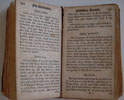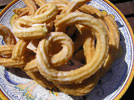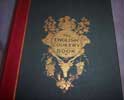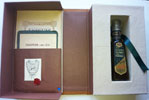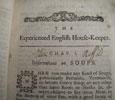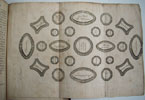THE EDIBLE MOLLUSCA
of GREAT BRITAIN AND IRELAND with Recipes for Cooking them. by M.S. LOVELL. "And the recipes and different modes of dressing - I am prepared to teach the world for nothing, - If men are only wise enough to learn." Atheneus, Deipnos, Book i. .60. SECOND EDITION. (aa small printer's device). LONDON; L. REEVE AND Co., 5 HENRIETTA STREET, COVENT GARDEN. [All rights reserved]
Second edition, first issue 1884. Small 8vo. 190 x 125mm. With 12 fine hand coloured lithographs. (illustrator - G.B.Sowerby). 1fep. Half-title. [2] Coloured frontis of various edible snails w/ Latin and English names. Title page. [1] 1page Preface. [1] 1p Contents. 1p Illustrations. [1] First illustrated page of a Clam. (1)2-274. 275-287 List of works consulted. 1p Errata. (1)290-310 Index. [2] (1)2-16 Reeve and Co List of works. 1fep. Full purple cloth binding, slightly mottled, with blind tooling on both covers and gilt text on the faded spine and a gilt snail on the front. Internally very clean.
- From part of the preface we learn of Ms Lovell's motivation for writing about this intriguing wide-ranging subject: We understand the good qualities of oysters, cockles, and a few other kinds; but some equally nutritious (which are universally eaten on the Continent) are seldom, if ever, seen in our markets, or are only used locally as food, and the proper modes of cooking them are scarcely known. I have therefore endeavoured to call attention to all the eatable species common on our coasts, and also to those which, though not found here in abundance, might be cultivated as easily as oysters, and form valuable articles of food: In an article written in 2007 by S.P. Dance on the Deep Dyve Library website, we learn that Thomas Bell wrote a review of this book on 'The Athenaeum' in 1867, the year of publication of the 1st edition. It is obvious that he had studied it closely. Stating in his review; "The title of this book indicates but a small item in its contents, and does scant justice to its real interest. The gastronome who takes it up as a mere cookery-book, or the general reader who, by the same impression, rejects it unexamined, will alike upon a partial and inadequate notion of its merits. In fulfilling what purports to be its main design, then it has indeed, exhausted the subject in a most satisfactory manner, and laid before us the modes of preparing an immense number of tempting dishes, many, perhaps most, of which are new to the English epicure". Indeed, the book is full of surprises in its text. The small gems of advice, the numerous insights gleaned, the many recipes for Oysters, Snails, Mussels, Sea Urchins, Cockles, Razor Clams, Scallops etc, makes this a seriously underestimated book that is now becoming sought after. Ms Lovell lists within 14 pages, approx. 430 sources researched. A great, scarce unusual book.

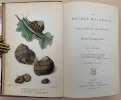




click on image to enlarge

Antiquarian category
ref number:
11299 


